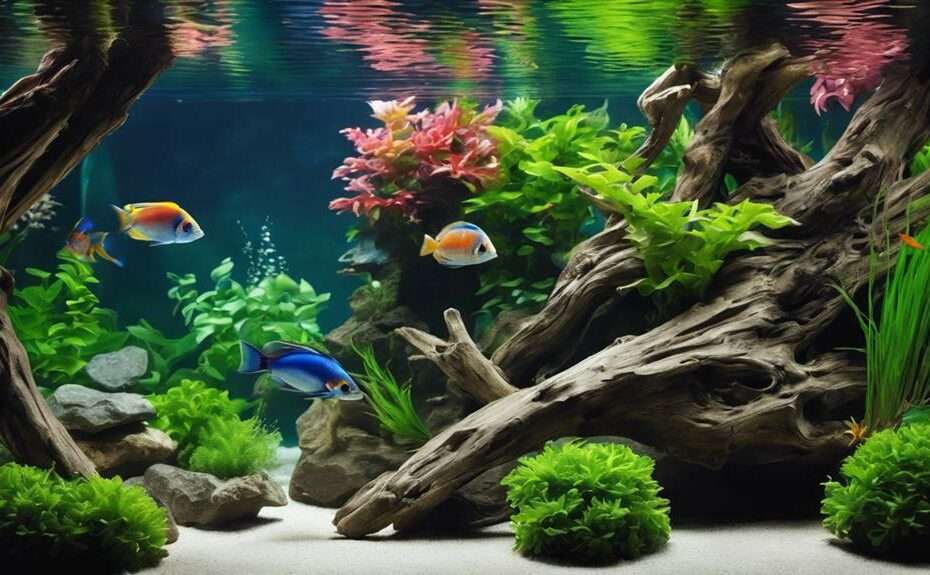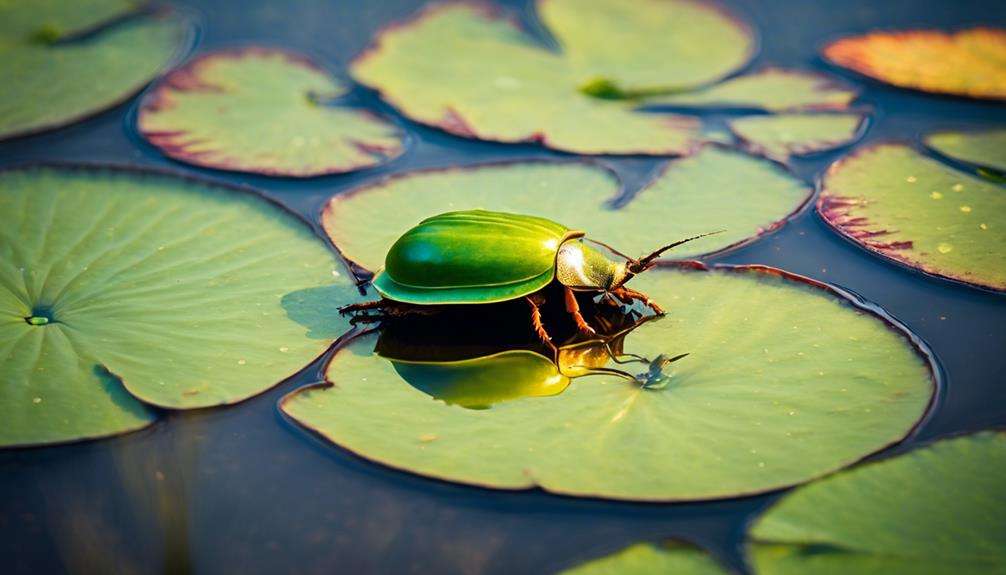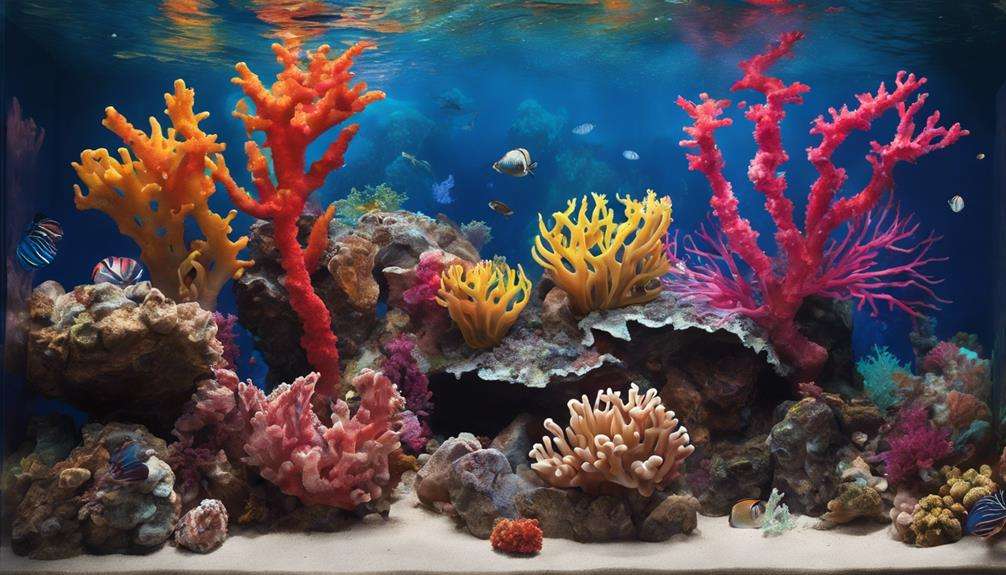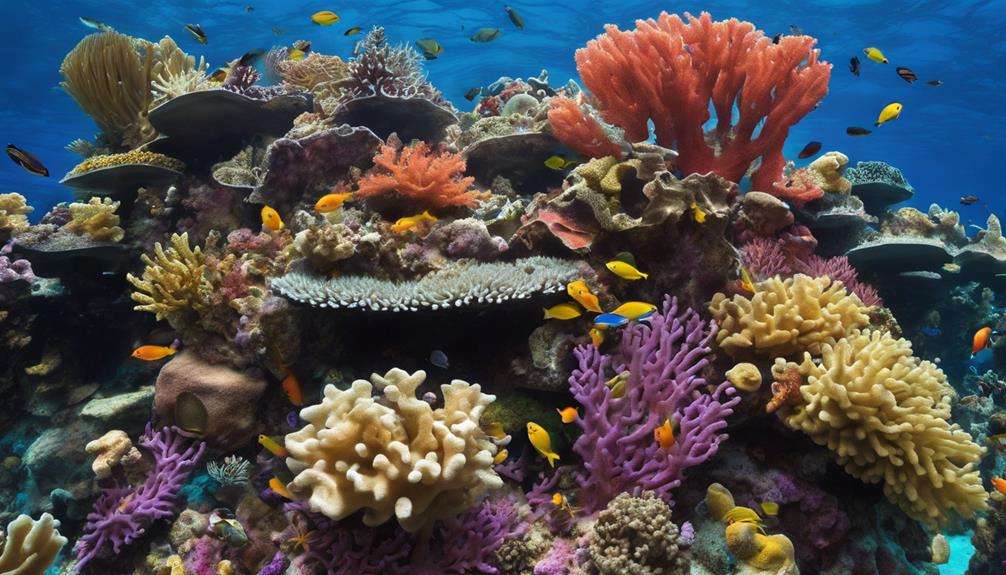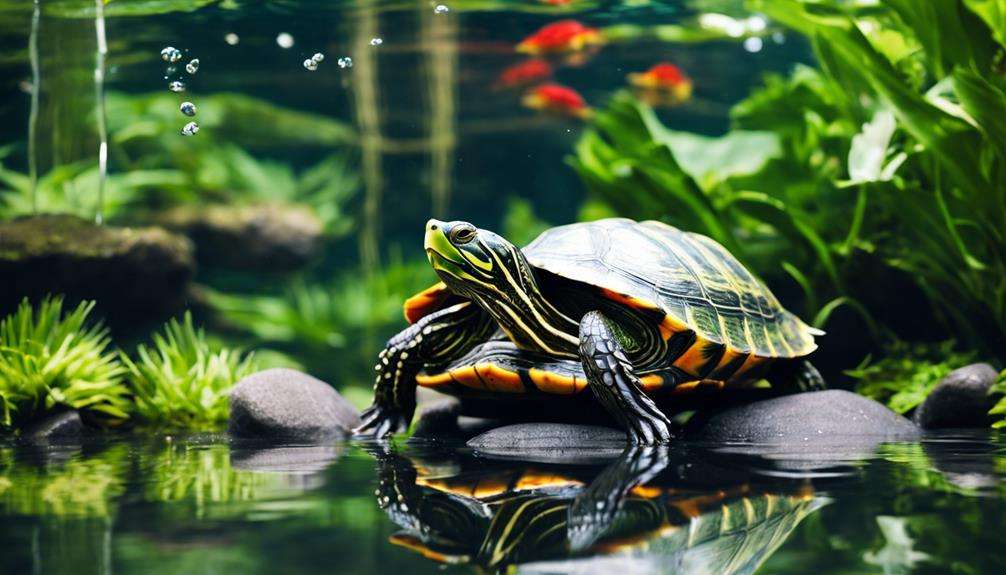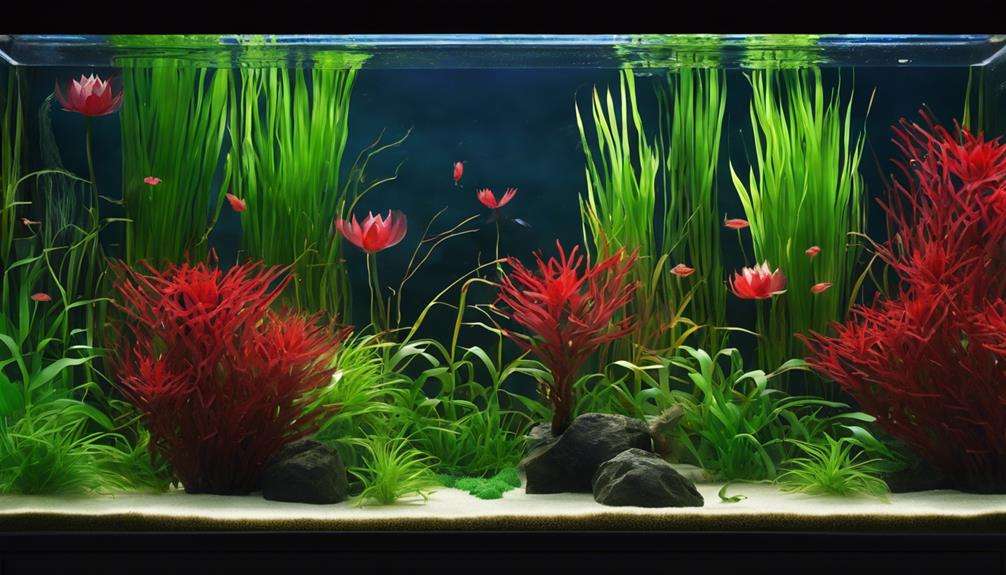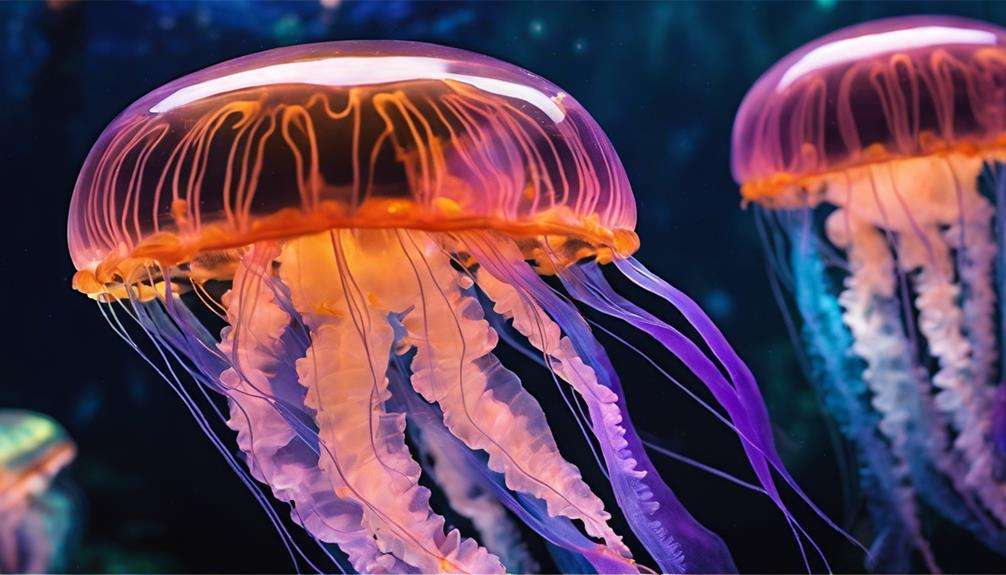So, you think creating a natural habitat for exotic fish is just about tossing them in some water and calling it a day?
Think again. With seven key tips in mind, you can elevate your fishkeeping game to a whole new level.
From researching native habitats to monitoring fish behavior, each step plays an essential role in ensuring your exotic fish thrive in an environment that closely mirrors their natural homes.
But wait, there's more to this intricate process than meets the eye.
Key Takeaways
- Research native habitats and match water parameters for optimal health.
- Provide suitable substrate and plants for naturalistic environments.
- Offer hiding spots and security measures to reduce stress.
- Maintain water quality, monitor behavior, and prevent diseases for thriving exotic fish.
Researching Native Habitats
Researching native habitats is an essential initial step in creating a thriving natural habitat for exotic fish in your aquarium. The native habitats of fish species provide valuable information about the specific environmental conditions they thrive in.
Understanding the type of water preferred by the fish, whether it's freshwater, brackish, or saltwater, is important for their well-being. Additionally, knowledge of the plants that naturally occur in the fish's habitat can help in selecting suitable vegetation for your aquarium, providing hiding spots and oxygenation.
Matching Water Parameters
To guarantee the peak health and well-being of your exotic fish, meticulously match the water parameters required by your specific species, including pH levels, temperature, hardness, and salinity. Different types of fish have varying requirements when it comes to water temperature, so it's important to research the ideal range for your particular species.
Use a reliable water testing kit to regularly monitor and adjust the pH levels to make sure they fall within the recommended range. Hardness, which refers to the mineral content of the water, should also be considered and adjusted accordingly to mimic the natural habitat of your fish. Additionally, salinity levels are essential for certain species that require specific salt concentrations in the water.
When setting up your fish tank, take into account the natural habitat of the fish to replicate their preferred water conditions as closely as possible. Consulting with experienced aquarists or specialists can provide valuable insights to help you create the perfect aquatic environment for your exotic fish.
Selecting Suitable Substrate
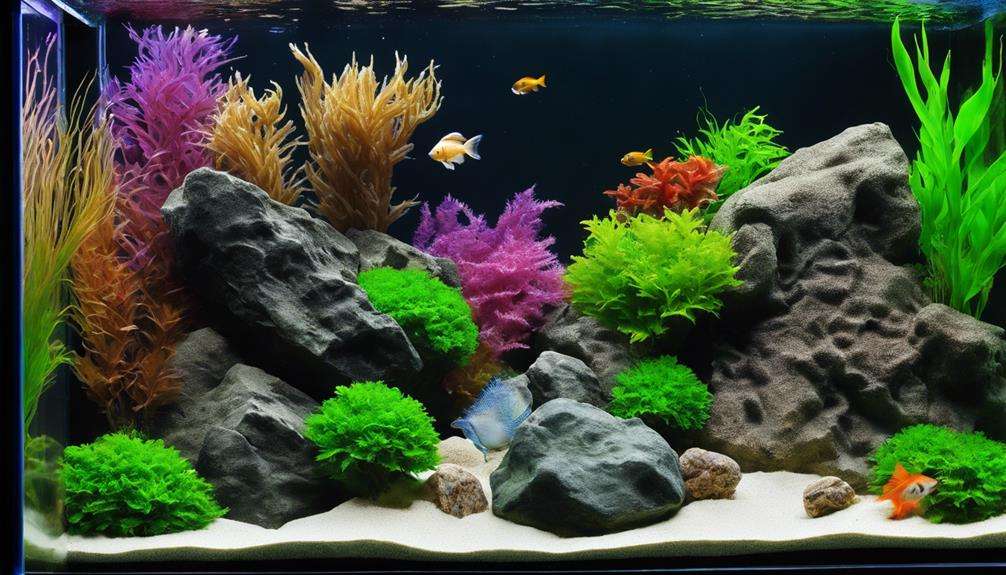
Choose a substrate that aligns with the natural habitat of your exotic fish species, tailoring to their unique needs and behaviors. Consider the type of substrate, such as sand or gravel, based on whether your fish are bottom-dwellers or burrowers.
The depth of the substrate should also be adjusted to accommodate your fish's natural tendencies, creating a comfortable and safe environment for them to thrive.
Substrate Types
For bottom-dwelling exotic fish, such as catfish or loaches, selecting a fine sand or gravel substrate is essential to mimic their natural habitat and promote their well-being. Opt for smooth substrates to prevent injuries to fish with delicate barbels or fins.
Dark substrates not only showcase vibrant fish colors but also reduce stress in shy species. If you're aiming for live plant growth in your aquarium, consider using planted tank substrates. These substrates facilitate nutrient absorption in the substrate layer, supporting healthy plant development.
Avoid sharp or rough substrates that could harm fish, especially during burrowing or sifting behaviors. By choosing the right substrate types, you can create a conducive environment for your exotic fish to thrive.
Substrate Depth
When considering the best substrate depth for your aquarium, it's important to factor in the specific needs of your exotic fish and plants to guarantee a balanced and flourishing aquatic environment. The ideal substrate depth typically ranges from 1-2 inches, facilitating proper root growth and nutrient circulation.
However, for plants such as Amazon swords or Vallisneria with extensive root systems, a depth of 3 inches or more is recommended. Sand substrates should be kept shallow at around 1/2 inch to prevent anaerobic pockets and enhance water circulation.
Gravel substrates, on the other hand, are best maintained at a depth of 1/4 to 1/2 inch to support adequate plant anchoring and root development. Matching substrate depth to the requirements of aquatic plants is paramount for fostering a healthy and thriving aquarium ecosystem.
Choosing Aquatic Plants Wisely
To create a balanced ecosystem in your aquarium for exotic fish, carefully select aquatic plants that cater to the specific needs of your fish species and tank size. When choosing the best plants for your aquarium, consider species like Java Moss, Anubias, and Amazon Sword, which not only provide hiding spots for your fish but also oxygenate the water effectively. These plants are ideal for various tank sizes and have manageable maintenance requirements, making them suitable for both beginners and experienced hobbyists.
It's essential to factor in the growth rate of the plants to prevent them from overcrowding your tank. Additionally, floating plants such as Duckweed or Amazon Frogbit can offer shade and cover, creating a more natural environment for shy fish species. Avoid aggressive plants that may dominate the tank or demand excessive care, as these can disrupt the harmony of your aquatic ecosystem.
Providing Adequate Hiding Spots
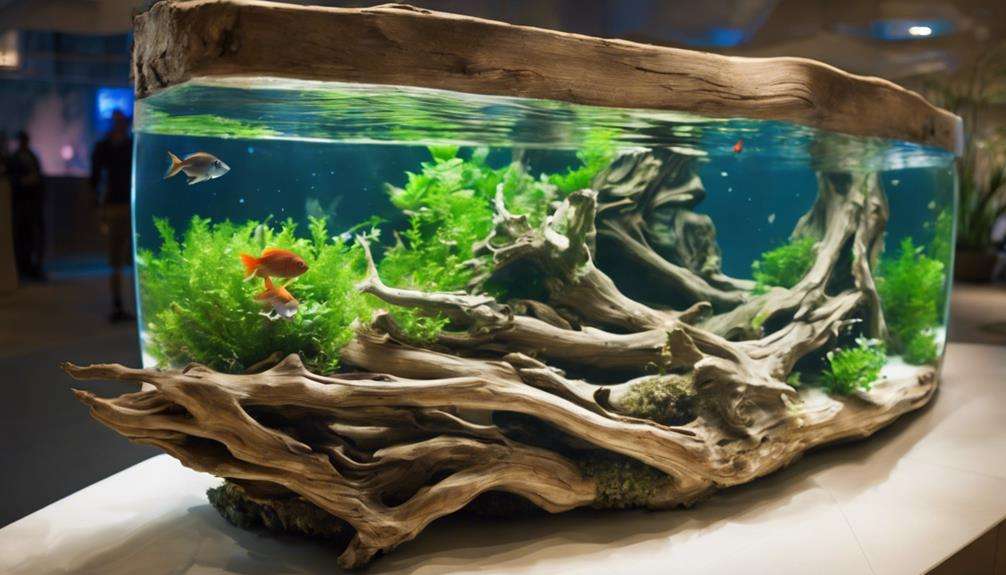
Adequate hiding spots play an important role in providing security and reducing stress for exotic fish species in aquarium environments. Aquatic life, especially exotic fish, often benefits from having hiding spots like caves, plants, driftwood, or rocks. These hiding spots mimic their natural habitat, creating a sense of security and promoting overall well-being.
For shy or territorial fish, these hiding spots help establish territories and reduce aggressive behaviors within the tank. Additionally, providing a variety of hiding spots can cater to different species' preferences and behaviors, ensuring that each fish has a suitable place to retreat and feel safe.
In addition, these hiding spots can even encourage breeding behaviors by offering safe spaces for spawning activities. When designing the layout of an aquarium for exotic fish, incorporating ample hiding spots is essential to creating an environment where the fish can thrive and exhibit their natural behaviors.
Maintaining Water Quality
As you advance in creating a natural habitat for exotic fish, ensuring peak water quality becomes important for the well-being of your aquatic companions. One important aspect of maintaining water quality is monitoring pH levels. Exotic fish have specific pH requirements, so it is important to test and adjust the water accordingly to prevent stress and health issues.
Additionally, the accumulation of fish feces can lead to ammonia spikes, which are harmful to fish. Regularly removing waste through partial water changes is important to keep ammonia levels in check and provide a healthy environment for your exotic fish.
Incorporating efficient filtration systems is another key factor in maintaining water quality. These systems help in removing debris, excess food, and other waste products that can degrade water quality. By investing in a quality filtration system, you can ensure water clarity and reduce the risk of harmful substances harming your exotic fish. Remember to follow manufacturer's guidelines for maintenance and replacement of filtration media to optimize its effectiveness in keeping your aquarium water clean and safe for your fish.
Monitoring Fish Behavior
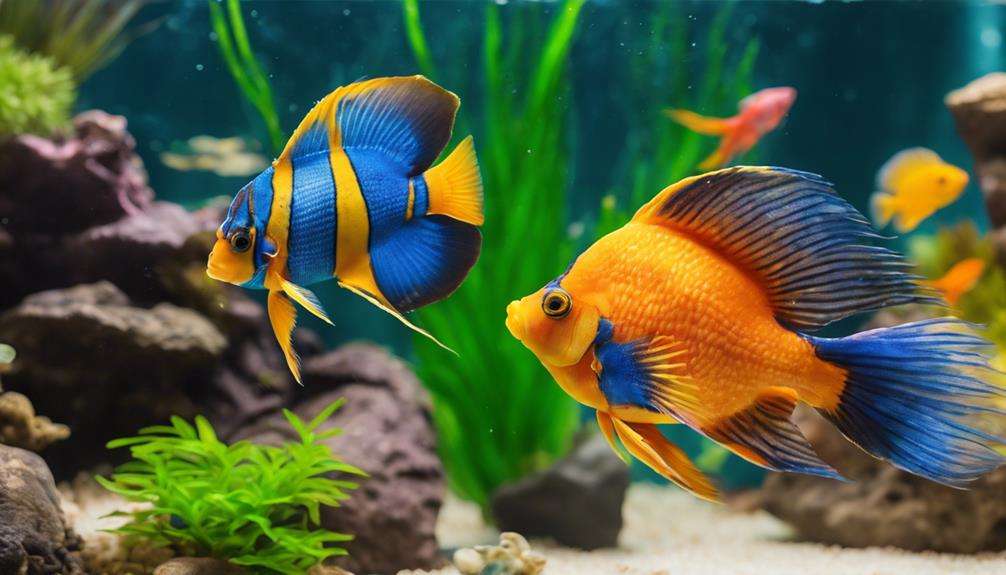
How can you effectively monitor the behavior of your exotic fish to guarantee their well-being and the overall health of your aquarium? Monitoring fish behavior is important in ensuring that your fish are thriving in their environment. Keep a close eye on their actions for any signs of stress, aggression, or illness. Look out for erratic swimming patterns, changes in coloration, fin condition, or lack of appetite, as these could indicate underlying issues. Note how they interact with their tank mates and if there are any sudden changes in behavior. Unusual hiding patterns, excessive aggression, or signs of distress should be addressed promptly.
Document any abnormal behaviors or patterns over time to track potential health concerns or environmental stressors affecting your fish. Regular observations of fish interactions, feeding habits, and overall activity levels will help you maintain a harmonious and healthy aquarium environment. By being attentive to your fish's behavior, you can detect early signs of problems and take appropriate action to guarantee their well-being.
Frequently Asked Questions
What Is the Natural Habitat of the Fish?
In the natural habitat, fish behavior is influenced by water parameters like temperature, pH levels, and hardness. Aquatic plants provide shelter and breeding grounds. Understanding these elements helps mimic their environment in an aquarium for their well-being and comfort.
What Needs Would Have to Be Met for an Aquarium to Be a Habitat for Tropical Fish?
To create a suitable habitat for tropical fish in an aquarium, guarantee water quality and temperature are stable, provide adequate tank size and decorations for hiding, offer proper lighting and filtration. These elements are critical for their health and well-being.
Is a Fish Tank a Habitat?
Yes, a fish tank serves as an artificial environment that can function as a habitat for fish. Understanding fish behavior is important in replicating a natural setting within the tank to meet their needs effectively.
What Is the Ecosystem of the Aquarium?
What shapes the aquarium ecosystem? It relies on factors like water quality, filtration, lighting, temperature, aquatic plants, and decorations. Maintaining this balance is crucial for fish health. Do you understand how each element influences the aquatic environment?
Conclusion
Vital, by meticulously recreating natural habitats for exotic fish, you can vital their well-being and enhance the overall aesthetics of your aquarium.
Remember to research native habitats, match water parameters, select suitable substrate and aquatic plants, provide hiding spots, maintain water quality, and monitor fish behavior.
By following these tips, you can create a thriving environment that mirrors their natural homes, promoting longevity and vitality in your exotic fish.
